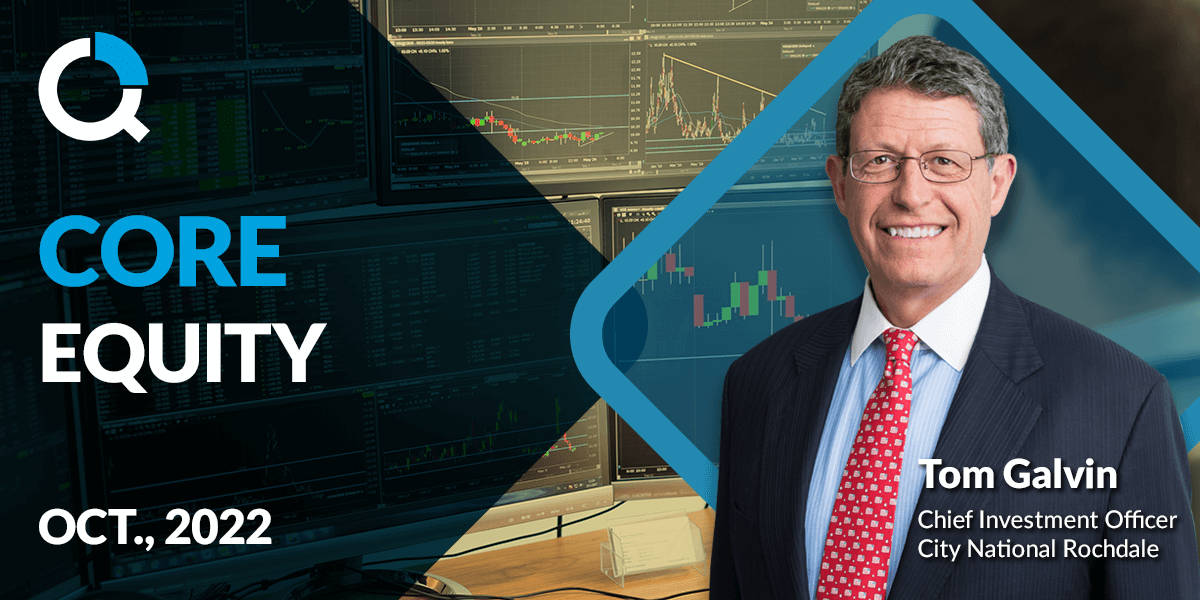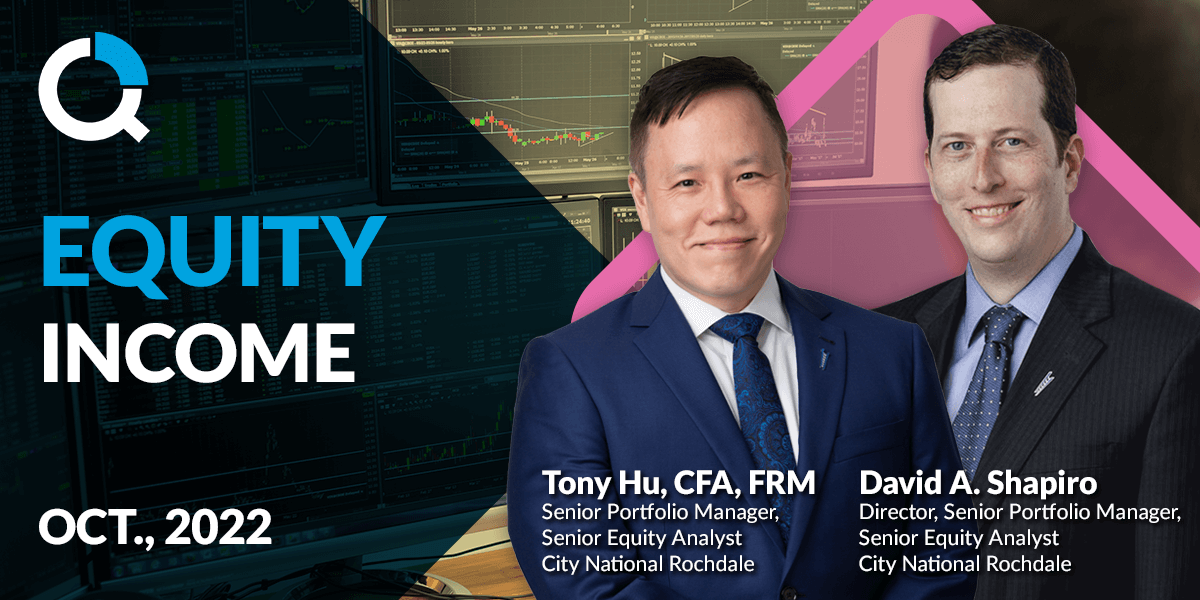
Market Update: Higher for Longer – Thoughts on Long-Term Equity Returns
Key Points
• Long-term structural shift is likely underway
• Expect more volatility in the economy, inflation and corporate profits
• Expect lower returns and higher volatility in financial markets
• Our long term equity capital market assumptions are below historical averages
Our strategic thinking has shifted to what we are describing as “higher for longer,” meaning an environment where higher for longer geopolitical uncertainty, inflation and interest rates will lead to higher for longer volatility in the economy and financial markets.
These dynamics, best illustrated by changes in our speedometers, have led us to reduce our near-term forecasts for GDP growth and corporate profits, while increasing our forecasts for inflation and interest rates.
Additionally, this shift is impacting our longer-term outlook for the economy, inflation and equity returns. What do we mean by this? The following charts show a decade-by-decade look at real GDP activity, inflation and stock prices. The bar is the average annual change for each item in each decade, and the line is the volatility, or standard deviation, of those changes.
Looking at real GDP, the US economy after World War II was very strong, averaging 4.2-4.4% growth over the 1950s and 1960s, with relatively low and declining volatility. In the 1970-1990 period, annualized growth slowed to around 3%. During the 1990s, with globalization and the addition of China to the World Trade Organization, the outsourcing of many jobs led to a slowing of real GDP growth rates to 1.9-2.3%
annualized, and volatility on a year-to-year basis fell even lower. While we’re only two years into the decade of the 2020s, GDP growth has slowed further but volatility has moved significantly higher (chart 1).
Regarding inflation, a similar pattern was evident in the 1950-1960 timeframe. Inflation was low – around 2% – and volatility year in and year out also was low. The 1970s brought a shift to higher inflation as two oil supply shocks, along with rising wages, led to a surge in average yearly CPI increases and rising volatility. By the end of the 1970s, a tighter monetary policy regime came into effect and inflation pressures started to abate in the 1980s, though volatility initially increased. With the combination of continued policy successes and globalization, inflation then declined for three decades – from 3% to 1.8% – and volatility was very low. While we’re only two years into the 2020s, inflation is once again up meaningfully and volatility also is on the rise (chart 2).
As it relates to stock prices, the average annual total return for the S&P 500 since 1950 has been around 11%. You can see that some decades are above this level, and some are in line or below this level. Volatility also has varied meaningfully from year to year. Our conclusion is that since the 1990s, we’ve been spoiled. Aside from the post 9-11 period and Great Financial Crisis, economic activity and inflation have been low. And while the first two years of this decade may not be a perfect harbinger of the next eight, we believe we are shifting to a period of higher for longer. How much higher and how much longer isn’t clear, but we believe investors should continue to expect lower returns with higher volatility for equities and should plan appropriately. Our long-term capital market assumptions for equities assumes returns of 6-7% that are meaningfully below the 11% average since the 1950s (chart 3).
Important Disclosures
Any opinions, projections, forecasts and forward-looking statements presented herein are valid as of the date of this document and are subject to change.
The information presented does not involve the rendering of personalized investment, financial, legal or tax advice. This presentation is not an offer to buy or sell, or a solicitation of any offer to buy or sell any of the securities mentioned herein.
Certain statements contained herein may constitute projections, forecasts and other forward-looking statements, which do not reflect actual results and are based primarily upon a hypothetical set of assumptions applied to certain historical financial information. Certain information has been provided by third-party sources and, although believed to be reliable, it has not been independently verified and its accuracy or completeness cannot be guaranteed.
Concentrating assets in a particular industry, sector of the economy, or markets may increase volatility because the investment will be more susceptible to the impact of market, economic, regulatory, and other factors affecting that industry or sector compared with a more broadly diversified asset allocation.
Private investments often engage in leveraging and other speculative investment practices that may increase the risk of investment loss, can be highly illiquid, are not required to provide periodic pricing or valuation information to investors, and may involve complex tax structures and delays in distributing important tax information.
Alternative investments are speculative, entail substantial risks, offer limited or no liquidity, and are not suitable for all investors. These investments have limited transparency to the funds’ investments and may involve leverage which magnifies both losses and gains, including the risk of loss of the entire investment. Alternative investments have varying and lengthy lockup provisions. Please see the Offering Memorandum for more complete information regarding the Fund’s investment objectives, risks, fees and other expenses.
Investments in below-investment-grade debt securities, which are usually called “high-yield” or “junk bonds,” are typically in weaker financial health and such securities can be harder to value and sell, and their prices can be more volatile than more highly rated securities. While these securities generally have higher rates of interest, they also involve greater risk of default than do securities of a higher-quality rating.
There are inherent risks with equity investing. These risks include, but are not limited to, stock market, manager or investment style. Stock markets tend to move in cycles, with periods of rising prices and periods of falling prices. Investing in international markets carries risks such as currency fluctuation, regulatory risks, and economic and political instability. Emerging markets involve heightened risks related to the same factors, as well as increased volatility, lower trading volume and less liquidity. Emerging markets can have greater custodial and operational risks and less developed legal and accounting systems than developed markets.
There are inherent risks with fixed-income investing. These risks may include interest rate, call, credit, market, inflation, government policy, liquidity or junk bond. When interest rates rise, bond prices fall. This risk is heightened with investments in longer-duration fixed-income securities and during periods when prevailing interest rates are low or negative. The yields and market values of municipal securities may be more affected by changes in tax rates and policies than similar income-bearing taxable securities. Certain investors’ incomes may be subject to the Federal Alternative Minimum Tax (AMT), and taxable gains are also possible. Investments in below-investment-grade debt securities, which are usually called “high yield” or “junk bonds,” are typically in weaker financial health and such securities can be harder to value and sell, and their prices can be more volatile than more highly rated securities. While these securities generally have higher rates of interest, they also involve greater risk of default than do securities of a higher-quality rating.
All investing is subject to risk, including the possible loss of the money you invest. As with any investment strategy, there is no guarantee that investment objectives will be met, and investors may lose money. Diversification does not ensure a profit or protect against a loss in a declining market. Past performance is no guarantee of future performance.
Indices are unmanaged, and one cannot invest directly in an index. Index returns do not reflect a deduction for fees or expenses.
Alternative investments are speculative, entail substantial risks, offer limited or no liquidity and are not suitable for all investors. These investments have limited transparency to the funds’ investments and may involve leverage which magnifies both losses and gains, including the risk of loss of the entire investment. Alternative investments have varying and lengthy lockup provisions.
This material is available to advisory and sub-advised clients, as well as financial professionals working with City National Rochdale, a registered investment advisor and a wholly-owned subsidiary of City National Bank. City National Bank provides investment management services through its sub-advisory relationship with City National Rochdale.
Non-deposit investment Products are: • not FDIC insured • not Bank guaranteed • may lose value
Stay Informed.
Get our Insights delivered straight to your inbox.
More from the Quarterly Update
Put our insights to work for you.
If you have a client with more than $1 million in investable assets and want to find out about the benefits of our intelligently personalized portfolio management, speak with an investment consultant near you today.
If you’re a high-net-worth client who's interested in adding an experienced investment manager to your financial team, learn more about working with us here.
